Synthesis and Application of FeCu Bimetallic Nanoparticles in Coal Mine Wastewater Treatment
Abstract
:1. Introduction
2. Materials and Methods
2.1. Bioflocculant Production Media
2.2. Source of Bacterium
2.3. Bioflocculant Extraction and Purification
2.4. Synthesis of FeCu Bimetallic Nanoparticles
2.5. Characterization of FeCu Nanoparticles
2.6. Flocculation Activity Determination
2.7. Determination of Physico-Chemical Parameters in Wastewater Samples
2.8. Removal of Pollutants in Wastewater by FeCu Nanoparticles
2.9. Statistical Analysis
3. Results
3.1. Fourier Transform-Infrared Spectroscopy Analysis of FeCu Nanoparticles
3.2. Transmission Electron Microscopy Analysis of FeCu Nanoparticles
3.3. Scanning Electron Microscopy Analysis of FeCu Nanoparticles
3.4. X-Ray Diffraction Analysis of FeCu BPNs Nanoparticles
3.5. Effect of Nanoparticles Dosage on Flocculation of Kaolin and Coal Mine Wastewater
3.6. Effect of Nanoparticles pH on Flocculation of Kaolin and Coal Mine Wastewater
3.7. Flocculation Activity of Different Water Samples by FeCu Nanoparticles
3.8. Physicochemical Parameters in Wastewater Samples
3.9. Pollutants Removal in Wastewater by Fe/Cu Nanoparticles
4. Discussion
5. Conclusions
Author Contributions
Funding
Institutional Review Board Statement
Informed Consent Statement
Data Availability Statement
Acknowledgments
Conflicts of Interest
References
- Kefeni, K.K.; Msagati, T.A.; Nkambule, T.T.; Mamba, B.B. Synthesis and application of hematite nanoparticles for acid mine drainage treatment. J. Environ. Chem. Eng. 2018, 6, 1865–1874. [Google Scholar] [CrossRef]
- Dlamini, N.G.; Basson, A.K.; Rajasekhar Pullabhotla, V.S. Biosynthesis of bioflocculant passivated copper nanoparticles, characterization and application. Phys. Chem. Earth Parts ABC 2020, 102898. [Google Scholar] [CrossRef]
- Akapo, C.S.O.; Ntombela, Z.G.; Pullabhotla, V.S.R.; Basson, A.K. Isolation, optimization, characterization and application of bioflocculant BA-CGB produced by novel Bacillus atrophaeus isolated from Richards Bay Harbour, South Africa. Biosci. Res. 2019, 16, 3873–3902. [Google Scholar]
- Okaiyeto, K.; Nwodo, U.U.; Okoli, S.A.; Mabinya, L.V.; Okoh, A.I. Implications for public health demands alternatives to inorganic and synthetic flocculants: Bioflocculants as important candidates. Microbiol. Open 2016, 5, 177–211. [Google Scholar] [CrossRef] [PubMed]
- Ngema, S.; Basson, A.; Maliehe, T. Synthesis, characterization and application of polyacrylamide grafted bioflocculant. Phys. Chem. Earth Parts ABC 2020, 115, 102821. [Google Scholar] [CrossRef]
- Maliehe, T.S.; Basson, A.K.; Dlamini, N.G. Removal of pollutants in mine wastewater by a non-cytotoxic polymeric bioflocculant from alcaligenes faecalis HCB2. Int. J. Environ. Res. Public Health 2019, 16, 4001. [Google Scholar] [CrossRef] [Green Version]
- Zhang, Z.Q.; Lin, B.; Xia, S.Q.; Wang, X.J.; Yang, A.M. Production and application of a novel bioflocculant by multiple-microorganism consortia using brewery wastewater as carbon source. J. Environ. Sci. 2007, 19, 667–673. [Google Scholar] [CrossRef]
- Guo, H.; Hong, C.; Zhang, C.; Zheng, B.; Jiang, D.; Qin, W. Bioflocculants’ production from a cellulase-free xylanase-producing Pseudomonas boreopolis G22 by degrading biomass and its application in cost-effective harvest of microalgae. Biores. Technol. 2018, 255, 171–179. [Google Scholar] [CrossRef]
- Mohammed, J.N.; Wan Dagang, W.R.Z. Implications for industrial application of bioflocculant demand alternatives to conventional media: Waste as a substitute. Water Sci. Technol. 2019, 80, 1807–1822. [Google Scholar] [CrossRef]
- Fakhri, A.; Tahami, S.; Naji, M. Synthesis and characterization of core-shell bimetallic nanoparticles for synergistic antimicrobial effect studies in combination with doxycycline on burn specific pathogens. J. Photochem. Photobiol. B Biol. 2017, 169, 21–26. [Google Scholar] [CrossRef]
- Sharma, G.; Kumar, D.; Kumar, A.; Ala’a, H.; Pathania, D.; Naushad, M.; Mola, G.T. Revolution from monometallic to trimetallic nanoparticle composites, various synthesis methods and their applications: A review. Mater. Sci. Eng. C 2017, 71, 1216–1230. [Google Scholar] [CrossRef] [PubMed]
- Sharma, G.; Kumar, A.; Sharma, S.; Naushad, M.; Dwivedi, R.P.; ALOthman, Z.A.; Mola, G.T. Novel development of nanoparticles to bimetallic nanoparticles and their composites: A review. J. King Saud Univ. Sci. 2019, 31, 257–269. [Google Scholar] [CrossRef]
- Lu, H.; Wang, J.; Stoller, M.; Wang, T.; Bao, Y.; Hao, H. An overview of nanomaterials for water and wastewater treatment. Adv. Mater. Sci. Eng. 2016, 2016. [Google Scholar] [CrossRef] [Green Version]
- Esakkimuthu, T.; Sivakumar, D.; Akila, S. Application of nanoparticles in wastewater treatment. Pollut. Res 2014, 33, 567–571. [Google Scholar]
- Dlamini, N.G.; Basson, A.K.; Pullabhotla, V.S.R. Optimization and application of bioflocculant passivated copper nanoparticles in the wastewater treatment. Int. J. Environ. Res. Public Health 2019, 16, 2185. [Google Scholar] [CrossRef] [Green Version]
- El-Shall, M.S.; Abdelsayed, V.; Abd El Rahman, S.K.; Hassan, H.M.; El-Kaderi, H.M.; Reich, T.E. Metallic and bimetallic nanocatalysts incorporated into highly porous coordination polymer MIL-101. J. Mater. Chem. 2009, 19, 7625–7631. [Google Scholar] [CrossRef]
- Zhao, H.; Zhong, C.; Chen, H.; Yao, J.; Tan, L.; Zhang, Y.; Zhou, J. Production of bioflocculants prepared from formaldehyde wastewater for the potential removal of arsenic. J. Environ. Manag. 2016, 172, 71–76. [Google Scholar] [CrossRef]
- Dlamini, N.G.; Basson, A.K.; Pullabhotla, V.S.R. A Comparative study between Bimetallic Iron@ copper nanoparticles with iron and copper nanoparticles synthesized Using a bioflocculant: Their applications and biosafety. Processes 2020, 8, 1125. [Google Scholar] [CrossRef]
- Kurane, R.; Toeda, K.; Takeda, K.; Suzuki, T. Culture conditions for production of microbial flocculant by Rhodococcus erythropolis. Agricult. Biol. Chem. 1986, 50, 2309–2313. [Google Scholar]
- Mata, Y.; Torres, E.; Blazquez, M.; Ballester, A.; González, F.; Munoz, J. Gold (III) biosorption and bioreduction with the brown alga Fucus vesiculosus. J. Hazard. Mater. 2009, 166, 612–618. [Google Scholar] [CrossRef]
- Jiang, D.; Huang, D.; Lai, C.; Xu, P.; Zeng, G.; Wan, J.; Tang, L.; Dong, H.; Huang, B.; Hu, T. Difunctional chitosan-stabilized Fe/Cu bimetallic nanoparticles for removal of hexavalent chromium wastewater. Sci. Total Environ. 2018, 644, 1181–1189. [Google Scholar] [CrossRef] [PubMed]
- Lu, Z.-H.; Li, J.; Zhu, A.; Yao, Q.; Huang, W.; Zhou, R.; Zhou, R.; Chen, X. Catalytic hydrolysis of ammonia borane via magnetically recyclable copper iron nanoparticles for chemical hydrogen storage. Int. J. Hydrog. Energy 2013, 38, 5330–5337. [Google Scholar] [CrossRef]
- Lazarides, A.A.; Schatz, G.C. DNA-linked metal nanosphere materials: Structural basis for the optical properties. J. Phys. Chem. B 2000, 104, 460–467. [Google Scholar] [CrossRef]
- Wang, L.; Ma, F.; Qu, Y.; Sun, D.; Li, A.; Guo, J.; Yu, B. Characterization of a compound bioflocculant produced by mixed culture of Rhizobium radiobacter F2 and Bacillus sphaeicus F6. World J. Microbiol. Biotechnol. 2011, 27, 2559–2565. [Google Scholar] [CrossRef]
- Zulkeflee, Z.; Aris, A.Z.; Shamsuddin, Z.H.; Yusoff, M.K. Cation dependence, pH tolerance, and dosage requirement of a bioflocculant produced by Bacillus spp. UPMB13: Flocculation performance optimization through kaolin assays. Sci. World J. 2012, 2012. [Google Scholar] [CrossRef] [Green Version]
- Li, X.-M.; Yang, Q.; Huang, K.; Zeng, G.-M.; Liao, D.-X.; Liu, J.-J.; Long, W.-F. Screening and characterization of a bioflocculant produced by Aeromonas sp. Biomed. Environ. Sci. BES 2007, 20, 274–278. [Google Scholar]
- Lin, J.; Harichund, C. Isolation and characterization of heavy metal removing bacterial bioflocculants. Afr. J. Microbiol. Res. 2011, 5, 599–607. [Google Scholar]
- Pillai, J. Flocculants and coagulants: The keys to water and waste management in aggregate production. In Condensed Version Appeared in December Issue of Stone Review; Nalco Company: Budapest, Hungary, 1997. [Google Scholar]
- Sikosana, M.K.; Randall, D.G.; von Blottnitz, H. A technological and economic exploration of phosphate recovery from centralised sewage treatment in a transitioning economy context. Water SA 2017, 43, 343–353. [Google Scholar] [CrossRef] [Green Version]
- Backer, L.C. Cyanobacterial harmful algal blooms (CyanoHABs): Developing a public health response. Lake Reserv. Manag. 2002, 18, 20–31. [Google Scholar] [CrossRef]
- LENNTECH. Phosphorus Removal from Wastewater. PRW 2004/05. 2005. [Google Scholar]
- Hammes, F.; Seka, A.; Van Hege, K.; Van de Wiele, T.; Vanderdeelen, J.; Siciliano, S.D.; Verstraete, W. Calcium removal from industrial wastewater by bio-catalytic CaCO3 precipitation. J. Chem. Technol. Biotechnol. Int. Res. Process. Environ. Clean Technol. 2003, 78, 670–677. [Google Scholar] [CrossRef]
- Ramachandran, V. Removal, control and management of total dissolved solids from process effluent streams in the non-ferrous metallurgical industry-A review. In Proceedings of the C.Q. Jia, V. Ramachandran et al. the of Water, Air and Land: Sustainability Issues in Mineral and Metal Extraction (WALSIM II) Symposium, 51st Annual Conference of Metallurgists, Niagara Falls, ON, Canada, 30 September–3 October 2012; pp. 101–117. [Google Scholar]
- Singh, R.P.; Karmakar, G.; Rath, S.; Karmakar, N.; Pandey, S.; Tripathy, T.; Panda, J.; Kanan, K.; Jain, S.; Lan, N. Biodegradable drag reducing agents and flocculants based on polysaccharides: Materials and applications. Polym. Eng. Sci. 2000, 40, 46–60. [Google Scholar] [CrossRef]
- Samudro, G.; Mangkoedihardjo, S. Review on bod, cod and bod/cod ratio: A triangle zone for toxic, biodegradable and stable levels. Int. J. Acad. Res. 2010, 2, 235–239. [Google Scholar]
- Iloms, E.; Ololade, O.O.; Ogola, H.J.; Selvarajan, R. Investigating industrial effluent impact on municipal wastewater treatment plant in Vaal, South Africa. Int. J. Environ. Res. Public Health 2020, 17, 1096. [Google Scholar] [CrossRef] [PubMed] [Green Version]
- Ma, L.; Zhang, W.-X. Enhanced Biological Treatment of Industrial Wastewater with Bimetallic Zero-Valent Iron; ACS Publications: Washington, DC, USA, 2008. [Google Scholar]
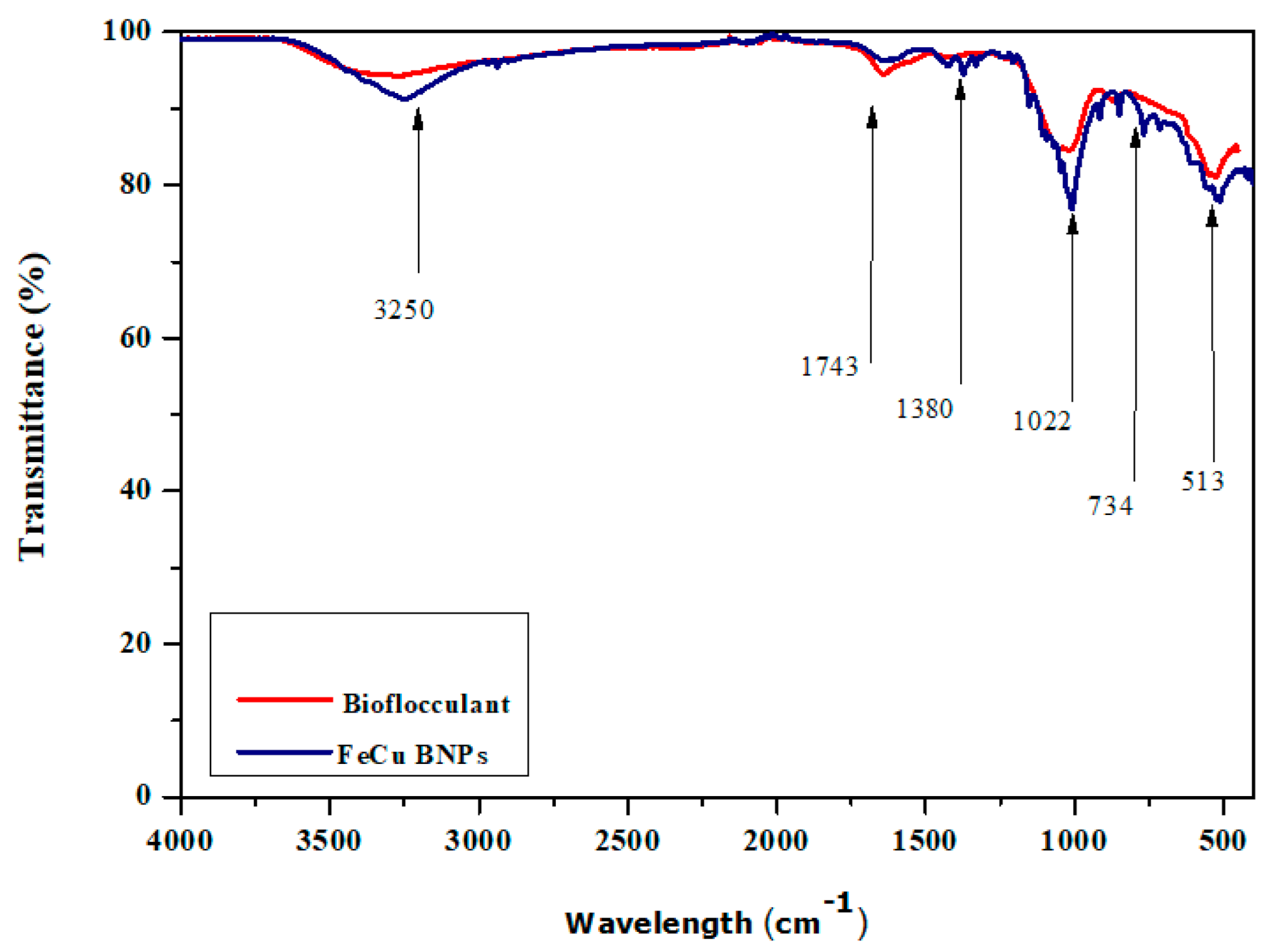


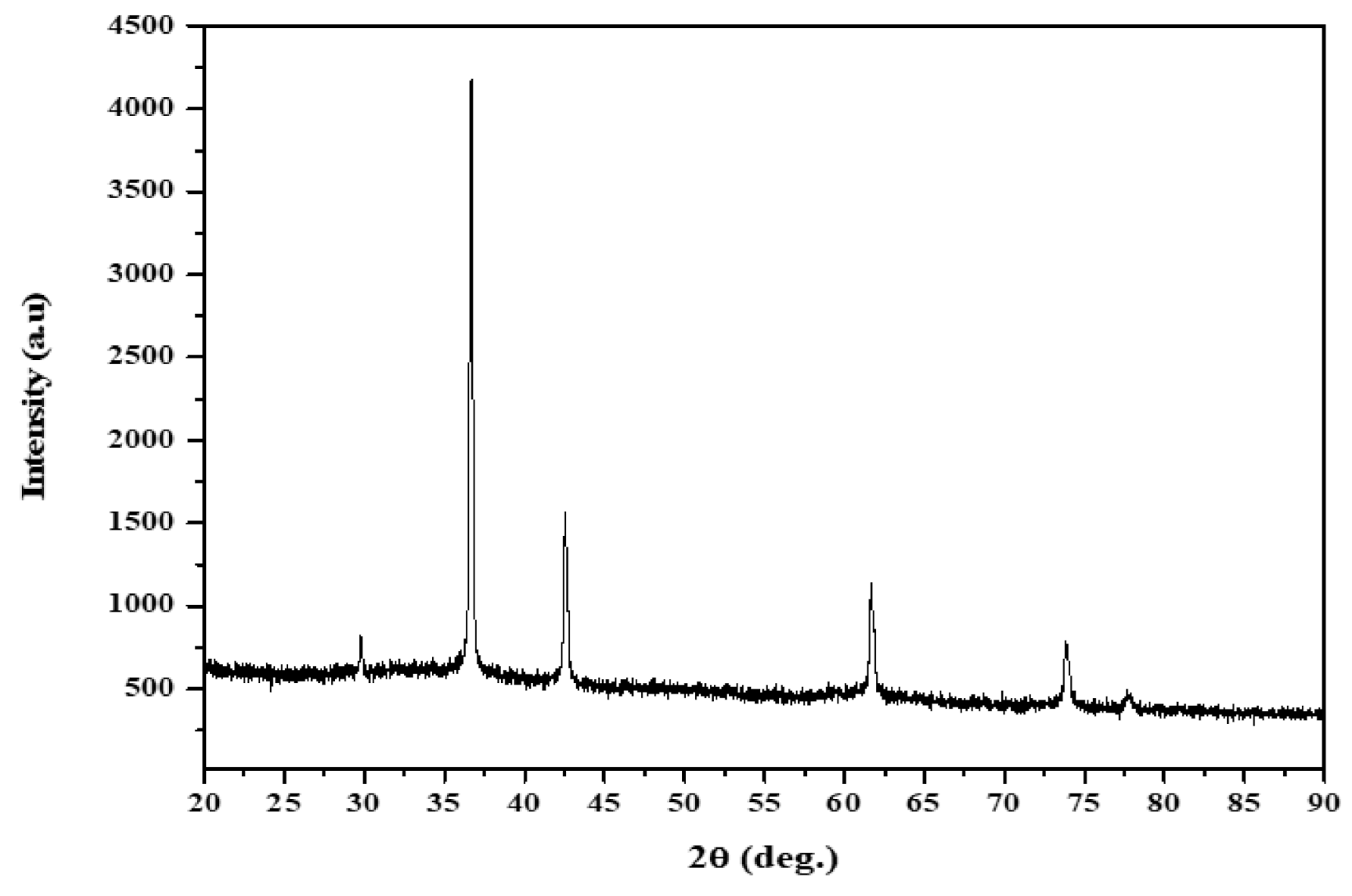
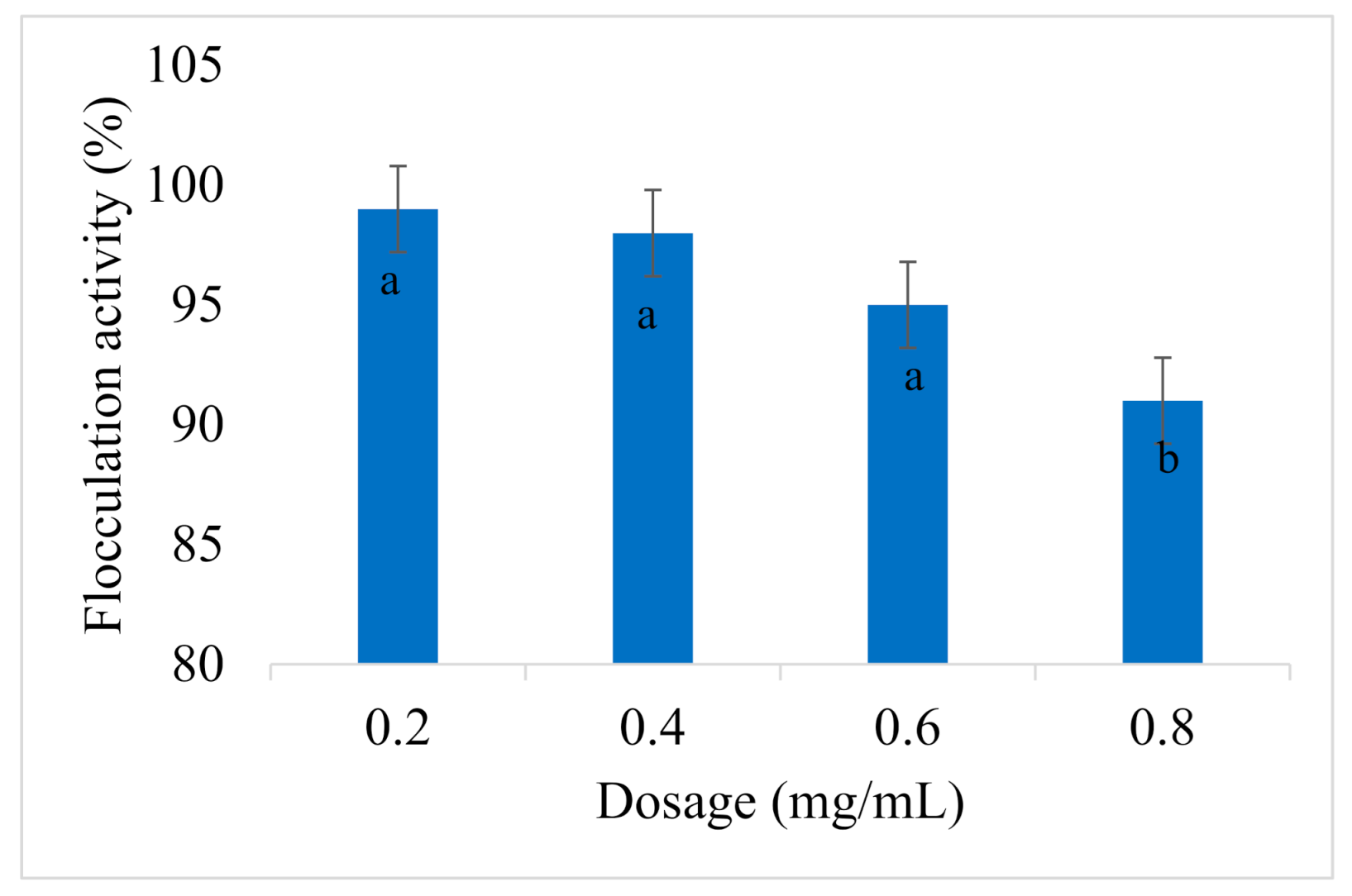
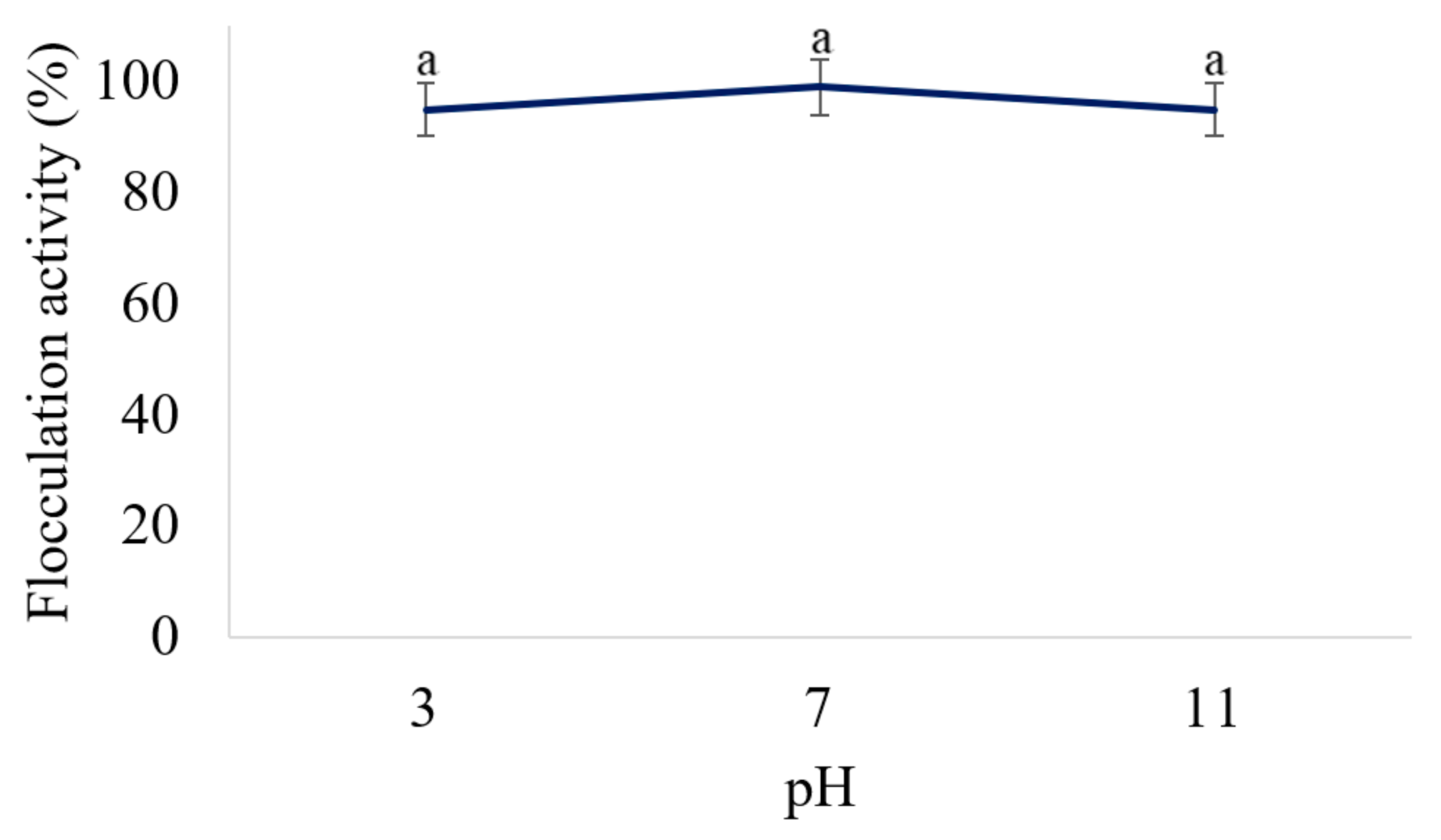
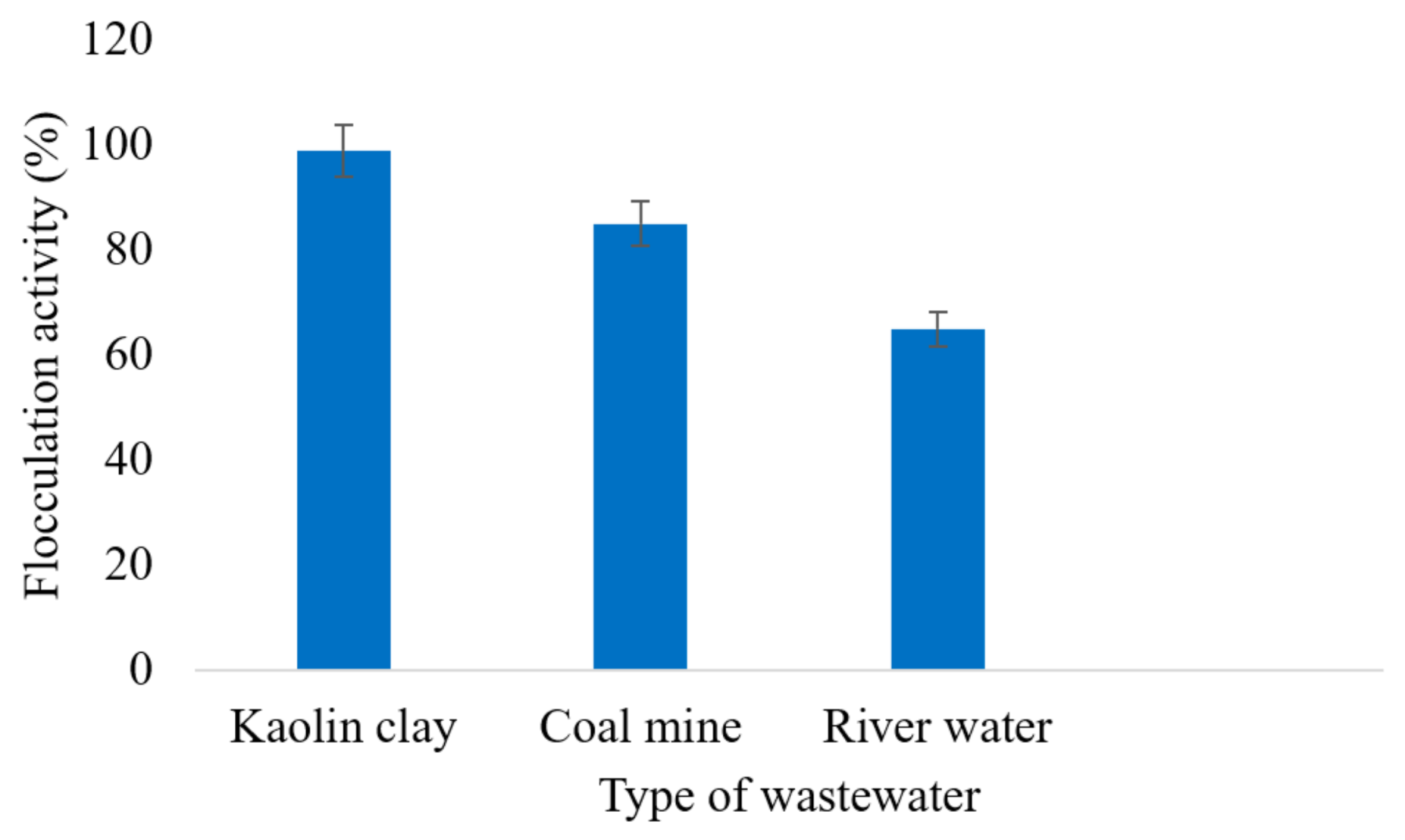
| Sample Site | pH | Absorbance (680 nm) | PO43− (mg/L) | SO42− (mg/L) | Ca2+ (mg/L) | COD (mg/L) | BOD (mg/L) |
|---|---|---|---|---|---|---|---|
| Coal mine | 8.2 | 2.9 | 2.0 | 55 | 132 | 1557 | 123.2 |
| Flocculant | Parameter (mg/L) | Water Quality before (mg/L) | Water Quality after (mg/L) | Removal Efficiency (%) |
|---|---|---|---|---|
| FeCu BNPs | Phosphate | 2.0 ± 0.0 | 0.04 ± 0.0 | 98 |
| Calcium | 132 ± 0.0 | 8.16 ± 0.0 | 87 | |
| Sulfate | 55 ± 0.1 | 11.55 ± 0.1 | 79 | |
| COD | 1557 ± 0.0 | 124.56 ± 0.0 | 92 | |
| BOD | 123.2 ± 0.0 | 3.41 ± 0.0 | 97 |
Publisher’s Note: MDPI stays neutral with regard to jurisdictional claims in published maps and institutional affiliations. |
© 2021 by the authors. Licensee MDPI, Basel, Switzerland. This article is an open access article distributed under the terms and conditions of the Creative Commons Attribution (CC BY) license (http://creativecommons.org/licenses/by/4.0/).
Share and Cite
Dlamini, N.G.; Basson, A.K.; Pullabhotla, V.S.R. Synthesis and Application of FeCu Bimetallic Nanoparticles in Coal Mine Wastewater Treatment. Minerals 2021, 11, 132. https://doi.org/10.3390/min11020132
Dlamini NG, Basson AK, Pullabhotla VSR. Synthesis and Application of FeCu Bimetallic Nanoparticles in Coal Mine Wastewater Treatment. Minerals. 2021; 11(2):132. https://doi.org/10.3390/min11020132
Chicago/Turabian StyleDlamini, Nkosinathi Goodman, Albertus Kotze Basson, and Viswanadha Srirama Rajasekhar Pullabhotla. 2021. "Synthesis and Application of FeCu Bimetallic Nanoparticles in Coal Mine Wastewater Treatment" Minerals 11, no. 2: 132. https://doi.org/10.3390/min11020132
APA StyleDlamini, N. G., Basson, A. K., & Pullabhotla, V. S. R. (2021). Synthesis and Application of FeCu Bimetallic Nanoparticles in Coal Mine Wastewater Treatment. Minerals, 11(2), 132. https://doi.org/10.3390/min11020132






